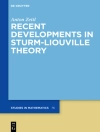Dive into the fascinating world of economic agglomerations with this interdisciplinary study, which is perfect for readers in nonlinear mathematics, economic geography, and spatial economics. This book uniquely bridges these fields, employing group-theoretic bifurcation analysis in nonlinear mathematics to establish a robust theoretical foundation for economic geographers and mathematicians alike.
Explore innovative models that describe the pattern formation in economic agglomerations through worker migration between regions. Delve into multi-regional formulations of classic economic geography models, applied to various spatial platforms such as line segments, racetracks, squares, and hexagonal lattices.
This book, ideal for researchers and practitioners, offers cutting-edge insights and methodologies for understanding the complexities of spatial economic agglomerations.
Inhaltsverzeichnis
.- Introduction to Bifurcation Analysis in Economic Geography.
.- Introduction to Economic Agglomeration Analysis.
.- Part I Bifurcation from the Uniform State.
.- Racetrack Economy: Introduction to Group-Theoretic Analysis.
.- Group-Theoretic Analysis of Square Lattice.
.- Group-Theoretic Stability Analysis of Hexagonal Lattice.
.- Spectrum Analysis of Population Data in German Reunification.
.- Locational Heterogeneity and Catastrophe in Two-Place Economy.
.- Analysis of Break points.
.- Part II Hierarchical Bifurcations and Invariant Patterns.
.- Racetrack Economy: Hierarchical Bifurcation and Invariant Patterns.
.- Invariant Patterns on Square and Hexagonal Lattices.
.- Global–Local Spatial Network.
.- Spatial Period-Doubling Cascade in Long-Narrow Economy.
.- Spatial Period-Doubling Cascade on Square Lattice.
.- Equidistant Economy.












